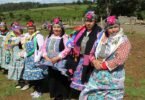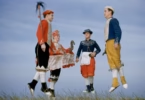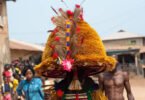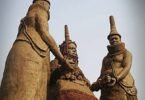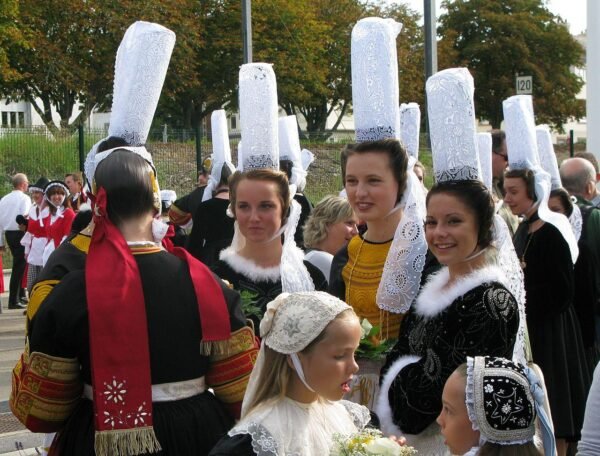
The Bretons, from northwesternmost France, specifically from Brittany, have a deeply rooted cultural heritage stemming from the Celts. Their traditional music, dances, and festivals are some of the eternal symbols of history, habits, and friendship that reveal their peculiar character.
From haunting melodies on ancient instruments to energetic dances that gather whole villages together, Breton culture is a joy of life and a standing testament to the resolute nature of its people.
This article investigates some interesting aspects of Breton music, dance, and festivals, highlighting traditions that have made Brittany a cultural treasure.
1. Breton Music: A Melodic Journey Through Time
Music lies at the heart of Breton culture, reflecting both its Celtic roots and its regional identity. The Bretons have folk music, together with modern compositions that capture the sounds of old combined with modern influences.
Traditional Instruments
Breton music is defined by its unique sound, created using traditional instruments:
- Bombarde: A wind instrument resembling an oboe, producing a loud, piercing sound often heard in outdoor celebrations.
- Biniou: A small Breton bagpipe with a higher pitch than its Scottish counterpart, commonly played alongside the bombarde.
- Harps and Fiddles: These string instruments add a melodic and harmonic layer to traditional tunes.
Styles and Themes
- Gwerz: Breton ballads known for their melancholic and storytelling nature, recounting tales of love, loss, and historical events.
- Kan ha Diskan: A call-and-response singing style performed a cappella, often accompanying dances.
- Fest-Noz Music: Upbeat and rhythmic tunes designed for traditional Breton dance gatherings.
Modern Influence
Today, artists like Alan Stivell and Nolwenn Leroy have brought Breton music to the global stage, blending traditional sounds with rock, pop, and world music influences.
2. Breton Dance: The Rhythm of Community
Dance is a vital part of Breton culture, uniting people of all ages and backgrounds in joyous celebration. Traditional Breton dances are simple yet dynamic, emphasising rhythm, connection, and community.
Popular Dance Forms
- An Dro: One of the most iconic Breton dances, performed in a circular formation where participants hold hands and move in a coordinated rhythm.
- Gavotte: A lively dance with variations depending on the region, often featuring a fast-paced tempo.
- Plinn: Characterised by bouncing movements, this dance is popular at Fest-Noz gatherings.
Cultural Significance
Breton dances are not just entertainment; they are a means of storytelling, expressing emotions, and preserving historical narratives. Each dance carries unique regional characteristics, reflecting the diversity within Brittany itself.
Fest-Noz: A Dance Extravaganza
The Fest-Noz, or Night Festival, is a highlight of Breton dance tradition, when people gather to dance and socialise while celebrating their ancestry. UNESCO recognises these celebrations as an intangible cultural property, attracting both locals and visitors to experience the energy and joie de vivre that Breton customs can provide.
3. Breton Festivals: A Celebration of Identity
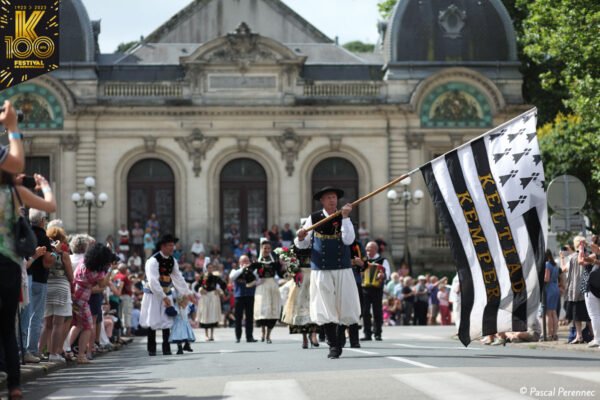
Festivals are a flamboyant expression of Breton identity and showcase for music, dancing, and other traditions. Such festivals reflect Brittany’s Celtic heritage but also its acceptance of modernity.
Major Festivals
- Festival Interceltique de Lorient: The Interceltique Festival in Lorient is one of the best-known Celtic festivals in the world, taking place annually in Lorient. The event celebrates the different Celtic cultures emanating from Brittany, Ireland, Scotland, Wales, Galicia, and other territories through music, dance, and artistic manifestations.
- Fête de la Saint-Yves: A religious and cultural feast in honour of Saint Yves, patron saint of Brittany, with parades, concerts, and traditional ceremonies.
- Festival de Cornouaille: One week of celebration in Quimper, of Breton music, dancing, dressing up, and above all, gastronomy.
Traditional Customs
Processions, re-enactments of historical events, and competitions in traditional music and dance characterise many festivals in Bretan. Events that create community pride by perpetuating the culture.
Modern Appeal
Even as the festivals maintain their traditional roots, their incorporation of modern music, installation art, and international foods now attracts people from all over the world.
4. The Role of Language in Music and Festivals
Breton language, or Brezhoneg, is a Celtic language closely related to Welsh and Cornish. The preservation and promotion of Breton music and festivals go through it. Many traditional songs and dances are performed in Bremen, keeping the language alive and relevant.
Language Revitalization
- Efforts at teaching Breton in schools and promoting its use in media and public spaces have gone a long way in reviving interest in the language.
- Many artists and performers sing in Breton to draw attention to its cultural importance.
Global Recognition
The use of Breton in festivals and music evidences the unique identity of the region and has led to international acclaim for cultural preservation efforts.
5. Breton Identity and Global Influence
In addition to helping to fortify their cultural identity, the Bretons’ dedication to their music, dance, and festivals has spread awareness of Celtic customs around the world.
Celtic Connections
It shares linguistic, musical, and cultural ties with the other Celtic regions as one of the six Celtic nations, which also include Ireland, Scotland, Wales, Cornwall, and the Isle of Man.
Tourism and Cultural Exchange
Festivals and traditions in the region draw people from all over the world. The people come together and show the world Britany’s rich heritage.
Legacy of Resilience
Despite historical challenges, including suppression of the Breton language and culture, the Bretons have demonstrated resilience, ensuring their traditions thrive in a modern context.
Conclusion
It is a land of folk music, dancing, and festivals that bear witness to the strong culture and indomitable spirit of its people. From haunting melodies played on traditional instruments to the communal merriment at a Fest-Noz gathering, the culture of Brittany continues to enthrall and inspire.
In so doing, the Bretons celebrate their traditions while embracing modern influences, offering the world a glimpse into the beauty of preserving one’s heritage. To whoever looks for a vivid and true cultural experience, Brittany is a beacon to history, creativity, and community.

